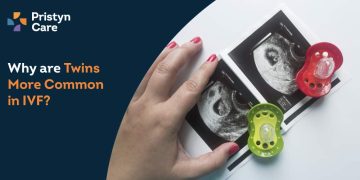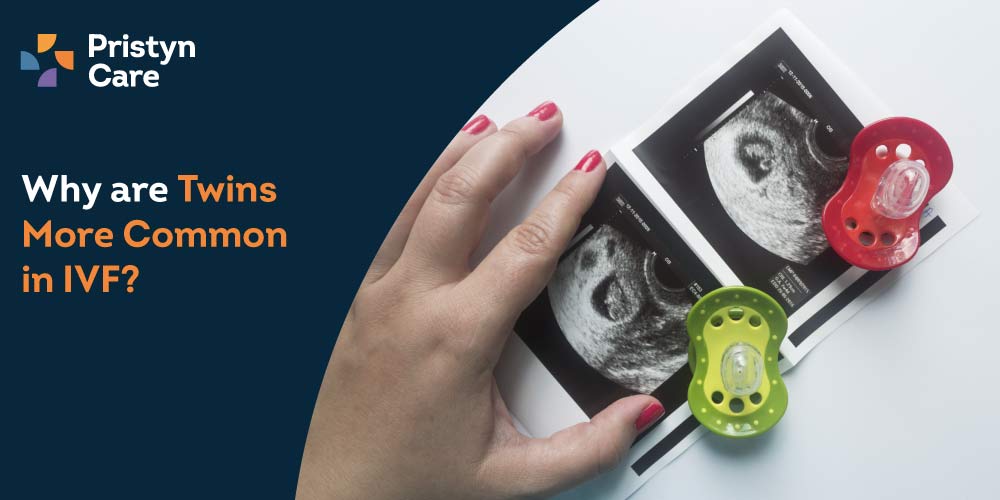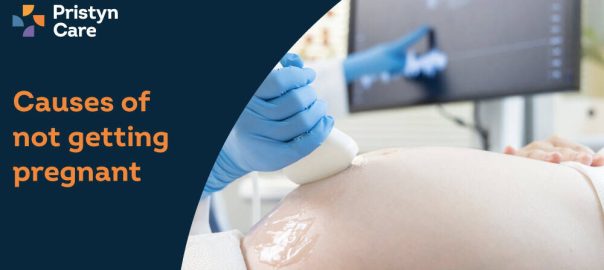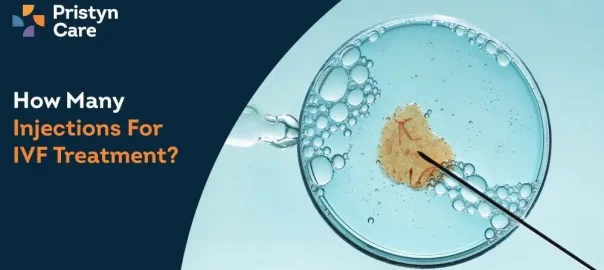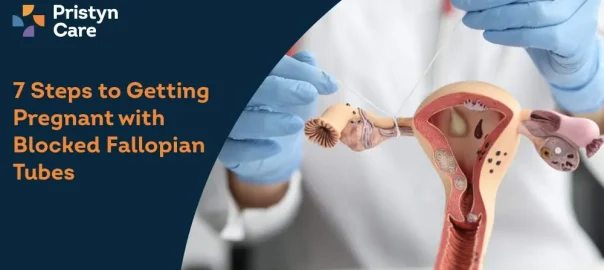![]() Views: 43
Views: 43
Why are Twins More Common in IVF?
Ever wondered why twins seem more common among those who undergo IVF? This isn’t just a coincidence—there’s a fascinating science behind it.
Dedicated Support at Every Step!
Our Doctors are available 24 hours a day, 7 days a week to help you!
Call Us9513-316-643In-vitro fertilization, a beacon of hope for couples struggling to conceive, often leads to multiple births, particularly twins. But why is that?
This blog gets into the factors that make twins more likely with IVF, exploring how the process works, from stimulation of the ovaries to the transfer of multiple embryos, contributes to this trend. We will also look at what it means for expecting parents—both the joys and the challenges.
Whether you are considering IVF or just curious about the process, understanding why twins are more frequent in IVF offers valuable insights into the journey of assisted reproduction.
Table of Contents
Understanding IVF: A Brief Overview
In-vitro fertilisation (IVF) is a groundbreaking procedure designed to help couples facing difficulties in conceiving naturally. IVF involves combining a woman’s egg and a man’s sperm in a laboratory setting to create an embryo. Once fertilized, the embryo is carefully monitored before being transferred into the woman’s uterus, where it may implant and develop into a pregnancy.
The process typically begins with ovarian stimulation, where medications are used to encourage the production of multiple eggs. These eggs are then retrieved, fertilised, and cultured in the lab.
After a few days, the healthiest embryo(s) are selected for transfer. IVF has opened up new possibilities for many, but it’s also a complex journey that requires careful planning and consideration, particularly when it comes to the possibility of multiple births.
No Cost EMI, Hassle-free Insurance Approval
Why Are Twins More Common in IVF? [Reasons to Know]
IVF often results in a higher likelihood of twins compared to natural conception. Here are five key reasons why twins are more common in IVF:
1. Multiple Egg Production and Stimulation
One of the primary reasons twins are more common in IVF is the use of fertility drugs to stimulate the ovaries. These medications are designed to help women produce more eggs than they would naturally in a single menstrual cycle. The goal is to increase the chances of fertilisation and successful pregnancy.
However, with more eggs released, there’s a higher likelihood that multiple eggs will be fertilised, leading to the development of more than one embryo, which can result in twins or even triplets.
2. Embryo Transfer Practices
In traditional IVF, more than one embryo is often transferred into the uterus to boost the chances of a successful pregnancy. This practice increases the likelihood that more than one embryo will implant and develop, leading to a multiple pregnancy.
While transferring multiple embryos can be an effective strategy, especially for those with a history of failed IVF attempts, it significantly raises the probability of twins.
3. Embryo Splitting
Though less common, embryo splitting can also result in twins during IVF. After fertilisation, an embryo may naturally split into two, leading to identical twins. This occurs in a small percentage of cases but adds to the overall likelihood of twins when undergoing IVF.
The exact reasons for embryo splitting are still not fully understood, but it’s a known factor contributing to the higher twin rate in assisted reproduction.
4. Advancing Maternal Age
Many women who undergo IVF tend to be older, as fertility often declines with age. Interestingly, older women are more likely to conceive twins naturally, and this tendency carries over into IVF treatments.
As the likelihood of releasing more than one egg increases with age, so does the chance of having twins when these eggs are fertilised and transferred back into the uterus.
5. Selection and Implantation of Viable Embryos
During IVF, embryologists often select the most viable embryos for transfer, those with the highest chance of leading to a successful pregnancy. Sometimes, multiple embryos are chosen to improve the overall success rate, especially in cases where the quality of embryos varies.
This practice increases the likelihood that at least one, and possibly more, embryos will implant, resulting in twins.
These factors collectively explain why twins are more frequently seen in IVF pregnancies, offering hope but also requiring careful consideration and planning by prospective parents.
Pros and Cons of Multiple Births in IVF
Multiple births, such as twins or triplets, are more common with IVF. While this can bring joy, it also comes with certain risks and benefits that need careful consideration.
The Joys of Having Twins or Triplets
For many couples, the prospect of having twins or triplets is a dream come true. Multiple births can bring a sense of completeness to a family more quickly and offer built-in companionship for the children as they grow. The excitement of welcoming more than one baby at once can be incredibly rewarding and fulfilling, particularly for those who have longed for children.
Increased Medical Risks
However, carrying multiple babies increases the risk of complications during pregnancy and childbirth. Mothers are more likely to experience high blood pressure, gestational diabetes, and preterm labour.
The babies themselves face a higher risk of being born prematurely, with associated challenges like low birth weight and the need for neonatal intensive care. These medical risks are significant factors that couples must consider when pursuing IVF.
Financial Considerations
Multiple births can also lead to higher financial costs. The need for specialized medical care, both during pregnancy and after birth, can result in increased healthcare expenses. Additionally, raising twins or triplets often requires more resources in terms of time, childcare, and everyday living costs, which can place a strain on family finances.
Long-Term Implications
Parents should also think about the long-term implications of raising multiple children simultaneously. The demands of parenting are multiplied, and while the joys are many, the challenges can be equally significant. This includes managing the emotional, educational, and social needs of more than one child at the same stage of life.
Understanding both the benefits and risks of multiple births in IVF helps parents-to-be make informed decisions, balancing their dreams of a larger family with the practical realities.
Advances in IVF: Reducing the Risk of Multiple Births
While multiple births have been common in IVF, recent advances aim to reduce this risk, ensuring safer pregnancies and healthier outcomes for both mother and child.
Single Embryo Transfer (SET)
One of the most significant advancements is the practice of Single Embryo Transfer (SET). By transferring only one embryo, the risk of twins or higher-order multiples is greatly reduced. This approach is supported by improved embryo selection techniques, which help identify the embryo with the highest potential for a successful pregnancy, thereby maintaining high success rates even with a single embryo.
Enhanced Embryo Selection Methods
Advancements in genetic testing, such as Preimplantation Genetic Testing (PGT), allow for the selection of the healthiest embryos. These methods assess the genetic makeup of embryos, increasing the chances of selecting the most viable one for transfer. By choosing the best-quality embryo, the need to transfer multiple embryos decreases, which in turn reduces the likelihood of multiple births.
Cryopreservation and Frozen Embryo Transfer (FET)
Cryopreservation technology has improved significantly, allowing for the successful freezing and later transfer of embryos. This enables a more cautious approach to IVF, where a single embryo can be transferred in each cycle without rushing to use all viable embryos at once. If the first transfer is not successful, others can be attempted in future cycles, still with a single embryo, minimizing the risk of multiples.
Conclusion
In summary, the increased likelihood of twins in IVF is a result of the process itself, from stimulating multiple eggs to transferring more than one embryo. While this can bring the joy of welcoming twins, it also introduces additional risks and challenges.
Advances in IVF techniques, such as Single Embryo Transfer and improved embryo selection, are helping to minimise these risks, offering safer outcomes. By understanding these factors, couples can better navigate their IVF journey and make decisions that align with their family goals.
Frequently Asked Questions
Q1. What is the chance of having twins with IVF?
The chance of having twins with IVF varies but generally ranges from 25% to 30% when multiple embryos are transferred. This rate is higher than natural conception, where the chance of twins is about 1% to 3%.
Q2. Can IVF lead to identical twins?
Yes, IVF can lead to identical twins if a single embryo splits into two after implantation. While this is rare, it can occur naturally in both IVF and natural pregnancies, resulting in identical twins sharing the same genetic material.
Q3. How does embryo freezing impact twin rates in IVF?
Embryo freezing, or cryopreservation, allows for single embryo transfers in subsequent cycles, reducing the need to transfer multiple embryos at once. This practice lowers the risk of multiple pregnancies, including twins, while maintaining a high success rate for each cycle.
Q4. Do fertility drugs increase the chances of twins?
Yes, fertility drugs used in IVF stimulate the ovaries to produce multiple eggs. This increases the likelihood of more than one egg being fertilized and developing into embryos, thereby raising the chances of twins or even higher-order multiples.
Q5. Can lifestyle choices affect the likelihood of twins in IVF?
While IVF primarily determines the likelihood of twins, factors like maternal age, diet, and overall health can influence pregnancy outcomes. However, lifestyle choices have a minimal direct impact on the increased twin rate specifically associated with IVF treatment.
Q6. Are twin pregnancies more common in fresh or frozen IVF cycles?
Twin pregnancies are more common in fresh IVF cycles where multiple embryos are often transferred. In frozen cycles, the practice of transferring a single embryo is more prevalent, which reduces the chances of twins but still maintains high success rates.
Q7. Is it possible to choose not to have twins with IVF?
Yes, by opting for a Single Embryo Transfer (SET) during IVF, couples can reduce the likelihood of twins. This approach involves transferring only one embryo to minimise the risk of multiple pregnancies, including twins, while still aiming for a successful pregnancy.
Q8. How do twin pregnancies differ from single pregnancies in IVF?
Twin pregnancies in IVF are associated with higher risks compared to single pregnancies. These include an increased likelihood of preterm birth, low birth weight, and complications for both the mother and babies. Monitoring and specialised care are often required for twin pregnancies.
Q9. What are the psychological impacts of twin pregnancies from IVF?
Twin pregnancies can bring joy but also added stress due to the increased demands of raising two children simultaneously. The emotional and psychological impacts can be significant, requiring additional support and preparation to manage the challenges of a twin pregnancy and parenting.
Q10. How does IVF success rate correlate with twin births?
Higher IVF success rates often correlate with a higher incidence of twin births, especially when multiple embryos are transferred. However, with advancements like Single Embryo Transfer (SET), success rates remain high while reducing the likelihood of twin pregnancies, offering safer outcomes.



